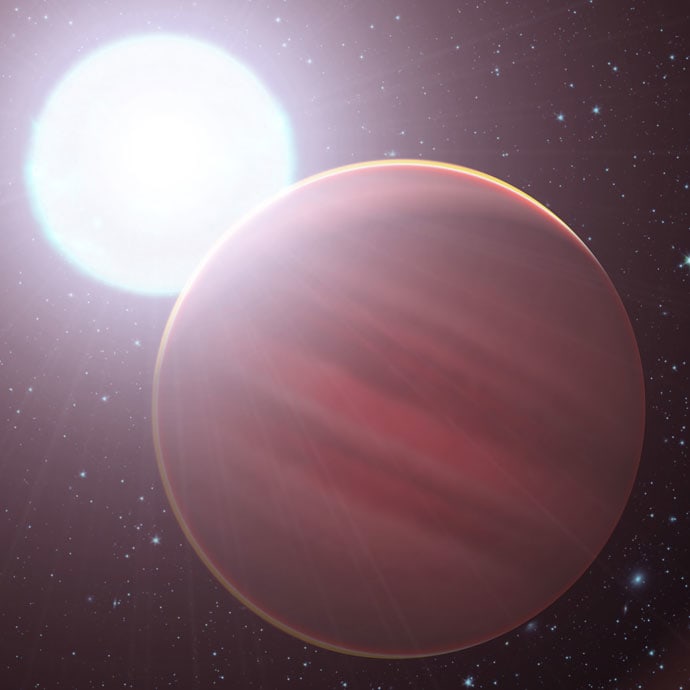Using NASA’s Hubble Telescope, scientists detected a stratosphere on the planet WASP-33b. A stratosphere occurs when molecules in the atmosphere absorb ultraviolet and visible light from the star. This absorption warms the stratosphere and acts as a kind of sunscreen layer for the planet below.
Using Hubble, the researchers have settled this debate by identifying a temperature inversion in the atmosphere of WASP-33b, which has about four-and-a-half times the mass of Jupiter. Team members also think they know which molecule in WASP-33b’s atmosphere caused the inversion -- titanium oxide.
Keywords
Extrasolar Planet, exo-planet, gas giant
Media
Color
Categories
Science
Subject(s)
Astronomy/Space
Copyright © 2015 NASA Goddard
- Subject Matter: Exoplanet Discovery
- Collections: Astronomy/Space Art

